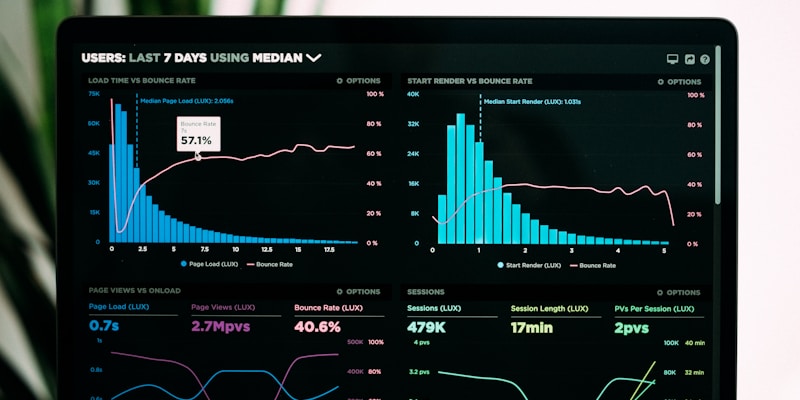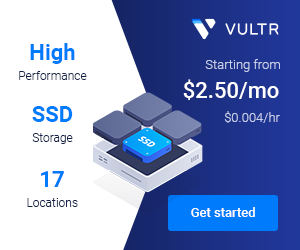Learning how to install latest version Angular properly sets the foundation for modern web development success. Angular continues evolving rapidly, with each new release bringing performance improvements, enhanced features, and better developer experience that make upgrading worthwhile.
This comprehensive guide walks you through every step needed to install latest version Angular on your development machine. Currently, Angular 19.0.0 is the latest stable version available for installation, while Angular 20.0.0 is scheduled for release in May 2025. You’ll discover professional techniques that experienced developers use to set up Angular environments efficiently while avoiding common installation pitfalls.

Why Install the Latest Version of Angular
Staying current with Angular releases provides significant advantages for developers and project success. Understanding these benefits helps you make informed decisions about when and how to upgrade your Angular installation.
Key Benefits of Latest Angular Versions
Install latest version Angular to unlock numerous improvements and new capabilities:
Performance enhancements appear in every Angular release, with optimizations to bundle sizes, rendering speed, and runtime performance. The Angular team continuously works to make applications faster and more efficient.
Security updates protect your applications from newly discovered vulnerabilities. Each Angular version includes patches for security issues and implements the latest web security best practices.
New features and APIs expand development possibilities while simplifying common tasks. Recent Angular versions have introduced standalone components, optional injectors, and improved reactive forms.
Better developer experience emerges through improved error messages, enhanced debugging tools, and streamlined development workflows. The Angular CLI receives regular updates that speed up development processes.
Long-term support (LTS) versions provide stability guarantees for enterprise applications. Angular follows a predictable release schedule with clear upgrade paths between versions.
Angular Release Schedule Overview
Actively Supported Versions:
| Version | Status | Released | Active Ends | LTS Ends |
| ^20.0.0 | Active | 2025-05-28 | 2025-11-21 | 2026-11-21 |
| ^19.0.0 | LTS | 2024-11-19 | 2025-05-28 | 2026-05-19 |
| ^18.0.0 | LTS | 2024-05-22 | 2024-11-19 | 2025-11-21 |
Important Note: While Angular 20.0.0 is listed as “Active” in the official schedule, it has a future release date of May 28, 2025. Currently available for installation is Angular 19.0.0, which is the latest stable version you can install today.
For Current Installation (December 2024):
- Install Angular 19.0.0 - This is the latest stable version currently available
- Angular 20.0.0 will be released in May 2025
Source: Angular Release Schedule
Source: Angular Release Schedule
Prerequisites for Angular Installation
Before you install latest version Angular, ensure your development environment meets all necessary requirements for smooth installation and optimal performance.
System Requirements
Operating System Compatibility:
- Windows: Windows 10 or later (Windows 11 recommended)
- macOS: macOS 10.15 Catalina or later
- Linux: Ubuntu 18.04+, CentOS 7+, or equivalent distributions
Hardware Recommendations:
- RAM: Minimum 8GB, 16GB recommended for large projects
- Storage: At least 10GB free space for Node.js, Angular CLI, and project files
- Processor: Modern multi-core processor (Intel i5/AMD Ryzen 5 or better)
Node.js Version Requirements
Angular requires specific Node.js versions for compatibility and optimal performance:
Current Angular 19 Requirements:
- Node.js: Version 18.19.1 or later, or 20.11.1 or later
- npm: Version 9.0.0 or later
- Yarn: Version 1.22.0 or later (optional)
Verify Current Node.js Installation:
node --version
npm --version
If your Node.js version is outdated, download the latest LTS version from nodejs.org.

Development Environment Setup
Essential Development Tools:
Code Editor Recommendations:
- Visual Studio Code: Free, extensive Angular extensions
- WebStorm: Professional IDE with built-in Angular support
- Sublime Text: Lightweight with Angular plugins
- Atom: Open-source with community Angular packages
Browser Developer Tools:
- Chrome DevTools: Essential for debugging Angular applications
- Angular DevTools Extension: Specialized Angular debugging extension
- Firefox Developer Tools: Alternative debugging environment
Installing Node.js for Angular Development
Node.js serves as the foundation for Angular development, providing the runtime environment and package management system required for modern web development.
Method 1: Official Node.js Installer
Download and Install Node.js:
- Visit the official website at nodejs.org
- Download the LTS version (recommended for stability)
- Run the installer and follow the setup wizard
- Verify installation using terminal commands:
# Check Node.js version
node --version
# Expected output: v18.18.0 (or later)
# Check npm version
npm --version
# Expected output: 9.8.1 (or later)
Method 2: Using Node Version Manager (NVM)
NVM Installation for Windows:
- Download NVM for Windows from GitHub repository
- Run the installer as administrator
- Restart command prompt or PowerShell
- Install latest Node.js LTS version:
# List available Node.js versions
nvm list available
# Install latest LTS version
nvm install 20.11.1
# Use specific version
nvm use 20.11.1
NVM Installation for macOS/Linux:
# Install NVM using curl
curl -o- https://raw.githubusercontent.com/nvm-sh/nvm/v0.39.0/install.sh | bash
# Reload terminal or source profile
source ~/.bashrc
# Install latest Node.js LTS
nvm install --lts
nvm use --lts
Package Manager Configuration
npm Configuration Optimization:
# Set npm registry (if needed)
npm config set registry https://registry.npmjs.org/
# Enable strict SSL (recommended)
npm config set strict-ssl true
# Set cache directory
npm config set cache ~/.npm
# View current configuration
npm config list
Alternative Package Managers:
Yarn Installation:
# Install Yarn globally via npm
npm install -g yarn
# Verify Yarn installation
yarn --version
pnpm Installation:
# Install pnpm globally
npm install -g pnpm
# Verify pnpm installation
pnpm --version
Installing Angular CLI
The Angular Command Line Interface (CLI) is essential when you install latest version Angular and develop Angular applications efficiently.
Global Angular CLI Installation
Install Angular CLI Globally:
# Install latest Angular CLI
npm install -g @angular/cli
# Verify installation
ng version
Expected Output:
Angular CLI: 19.0.0
Node: 20.11.1
Package Manager: npm 10.2.0
OS: Windows 10 (or your operating system)

Updating Existing Angular CLI
Update to Latest Version:
# Uninstall old version
npm uninstall -g @angular/cli
# Clear npm cache
npm cache clean --force
# Install latest version
npm install -g @angular/cli@latest
# Verify update
ng version
Angular CLI Configuration
Configure CLI Preferences:
# Set default package manager
ng config -g cli.packageManager npm
# Enable analytics (optional)
ng analytics on
# Set default stylesheet format
ng config -g schematics.@schematics/angular:component.style scss
# Configure autocomplete
ng completion
CLI Configuration File Location:
- Windows:
%USERPROFILE%\.angular-config.json - macOS/Linux:
~/.angular-config.json
Creating Your First Angular Project
After you install latest version Angular, creating a new project demonstrates that everything works correctly and familiarizes you with the Angular project structure.
Project Creation Command
Generate New Angular Project:
# Create new project with default settings
ng new my-angular-app
# Create project with specific options
ng new my-angular-app --routing --style=scss --strict
Interactive Project Setup: The Angular CLI will prompt you for configuration choices:
? Would you like to add Angular routing? (y/N) y
? Which stylesheet format would you like to use?
CSS
❯ SCSS [ https://sass-lang.com/documentation/syntax#scss ]
Sass [ https://sass-lang.com/documentation/syntax#the-indented-syntax ]
Less [ http://lesscss.org ]
Project Structure Overview
Angular Project Directory Structure:
my-angular-app/
├── src/
│ ├── app/
│ │ ├── app.component.ts
│ │ ├── app.component.html
│ │ ├── app.component.scss
│ │ ├── app.module.ts
│ │ └── app-routing.module.ts
│ ├── assets/
│ ├── environments/
│ ├── index.html
│ ├── main.ts
│ └── styles.scss
├── angular.json
├── package.json
├── tsconfig.json
└── README.md
Running Your Angular Application
Start Development Server:
# Navigate to project directory
cd my-angular-app
# Start development server
ng serve
# Start with specific port
ng serve --port 4200
# Start and open browser automatically
ng serve --open
Development Server Output:
✔ Browser application bundle generation complete.
Initial Chunk Files | Names | Raw Size
vendor.js | vendor | 2.90 MB |
main.js | main | 48.69 kB |
polyfills.js | polyfills | 33.06 kB |
styles.css | styles | 95 bytes |
| Initial Total | 3.00 MB
Build at: 2023-11-15T10:30:45.123Z - Hash: 1a2b3c4d5e6f - Time: 5678ms
** Angular Live Development Server is listening on localhost:4200 **
Verifying Angular Installation
Confirming that you successfully install latest version Angular requires testing various components and ensuring everything functions correctly.
Version Verification Commands
Check All Angular Versions:
# Display detailed version information
ng version
# Check specific package versions
npm list @angular/core
npm list @angular/cli
npm list typescript
Sample Version Output:
Angular CLI: 19.0.0
Node: 20.11.1
Package Manager: npm 10.2.0
OS: win32 x64
Angular: 19.0.0
... animations, common, compiler, compiler-cli, core, forms
... platform-browser, platform-browser-dynamic, router
Package Version
------------------------------------------------------
@angular-devkit/architect 0.1900.0
@angular-devkit/core 19.0.0
@angular-devkit/schematics 19.0.0
@schematics/angular 19.0.0
typescript 5.5.4
Functionality Testing
Test Angular CLI Commands:
# Generate new component
ng generate component test-component
# Generate new service
ng generate service test-service
# Build application
ng build
# Run tests
ng test
# Run end-to-end tests
ng e2e
Browser Testing:
- Open localhost:4200 in your web browser
- Verify the Angular welcome page displays correctly
- Check browser console for any error messages
- Test hot reload by modifying app.component.html
Performance Verification
Build Performance Metrics:
# Production build with statistics
ng build --stats-json
# Analyze bundle size
npx webpack-bundle-analyzer dist/my-angular-app/stats.json
Development Server Performance:
- Initial compilation time: Should complete within 10-15 seconds
- Hot reload time: Typically 1-3 seconds for small changes
- Memory usage: Monitor for memory leaks during development

Troubleshooting Common Installation Issues
Even when following proper procedures to install latest version Angular, you might encounter common issues that require specific solutions.
Node.js Version Conflicts
Problem: Angular CLI requires newer Node.js version
Error: The Angular CLI requires a minimum Node.js version of either v18.19.1 or v20.11.1.
Solution: Update Node.js to compatible version
# Using NVM (recommended)
nvm install 20.11.1
nvm use 20.11.1
# Verify version
node --version
Permission Errors
Problem: Permission denied when installing global packages
Windows Solution:
# Run PowerShell as Administrator
npm install -g @angular/cli
# Or configure npm to use different directory
npm config set prefix %APPDATA%\npm
macOS/Linux Solution:
# Use sudo (not recommended)
sudo npm install -g @angular/cli
# Better: Use NVM or configure npm prefix
npm config set prefix ~/.npm-global
export PATH=~/.npm-global/bin:$PATH
Network and Proxy Issues
Problem: npm install fails due to network restrictions
Solution: Configure npm for corporate networks
# Set proxy configuration
npm config set proxy http://proxy.company.com:8080
npm config set https-proxy http://proxy.company.com:8080
# Set registry to https
npm config set registry https://registry.npmjs.org/
# Disable strict SSL if necessary (not recommended)
npm config set strict-ssl false
Cache and Dependency Issues
Problem: Inconsistent behavior or outdated packages
Solution: Clear caches and reinstall
# Clear npm cache
npm cache clean --force
# Remove node_modules and package-lock.json
rm -rf node_modules package-lock.json
# Reinstall dependencies
npm install
# Update Angular CLI
npm update -g @angular/cli
TypeScript Compatibility Issues
Problem: TypeScript version incompatibility with Angular
Solution: Install compatible TypeScript version
# Check Angular TypeScript requirements
ng version
# Install specific TypeScript version
npm install -g [email protected]
# Verify TypeScript version
tsc --version
Advanced Angular Installation Options
Professional developers often require customized setups when they install latest version Angular for specific project requirements or development environments.
Enterprise Installation Strategies
Offline Installation:
# Download packages for offline installation
npm pack @angular/cli
# Install from local package
npm install -g angular-cli-17.0.0.tgz
Custom Registry Configuration:
# Configure private registry
npm config set registry https://npm.company.com/
# Install from custom registry
npm install -g @angular/cli --registry https://npm.company.com/
Docker-Based Angular Development
Angular Development Dockerfile:
FROM node:18-alpine
WORKDIR /app
# Install Angular CLI globally
RUN npm install -g @angular/[email protected]
# Copy package files
COPY package*.json ./
# Install dependencies
RUN npm install
# Copy application code
COPY . .
# Expose port
EXPOSE 4200
# Start development server
CMD ["ng", "serve", "--host", "0.0.0.0"]
Docker Compose Configuration:
version: '3.8'
services:
angular-app:
build: .
ports:
- "4200:4200"
volumes:
- .:/app
- /app/node_modules
environment:
- NODE_ENV=development
CI/CD Pipeline Integration
GitHub Actions Workflow:
name: Angular CI
on: [push, pull_request]
jobs:
build:
runs-on: ubuntu-latest
steps:
- uses: actions/checkout@v3
- name: Setup Node.js
uses: actions/setup-node@v3
with:
node-version: '18'
cache: 'npm'
- name: Install dependencies
run: npm ci
- name: Install Angular CLI
run: npm install -g @angular/[email protected]
- name: Build application
run: ng build --configuration production
- name: Run tests
run: ng test --watch=false --browsers=ChromeHeadless
Migrating from Older Angular Versions
When you install latest version Angular, you might need to upgrade existing projects from older Angular versions to take advantage of new features and improvements.
Angular Update Guide
Automated Update Process:
# Navigate to your project directory
cd my-existing-angular-project
# Use Angular Update Guide
ng update
# Update Angular Core and CLI
ng update @angular/core @angular/cli
# Update Angular Material (if used)
ng update @angular/material
# Update other Angular packages
ng update --all
Manual Migration Steps
Step-by-Step Migration Process:
1. Backup Your Project:
# Create backup
git add .
git commit -m "Backup before Angular update"
git tag "pre-angular-17-update"
2. Update Dependencies:
# Update package.json manually or use npm
npm update
npm audit fix
3. Run Migration Schematics:
# Angular provides migration schematics
ng update @angular/core --migrate-only --from=18 --to=19
4. Fix Breaking Changes: Review Angular’s update guide for specific breaking changes and required code modifications.
Migration Checklist
Pre-Migration Verification:
- Backup project completely
- Review breaking changes in Angular changelog
- Update Node.js to supported version
- Test current application functionality
- Update dependencies to compatible versions
Post-Migration Testing:
- Build application successfully
- Run all tests and ensure they pass
- Test application functionality thoroughly
- Check performance metrics
- Verify third-party integrations

Best Practices for Angular Development Environment
Maintaining an optimal development environment after you install latest version Angular ensures consistent performance and productivity across different projects and team members.
IDE and Extension Setup
Visual Studio Code Extensions:
- Angular Language Service: Provides IntelliSense and error checking
- Angular Snippets: Accelerates coding with predefined snippets
- Prettier: Automatic code formatting
- ESLint: Code quality and style checking
- GitLens: Enhanced Git integration
- Auto Rename Tag: Automatically renames paired HTML tags
WebStorm Configuration:
- Enable TypeScript service: Better type checking and completion
- Configure Angular CLI: Integrate CLI commands into IDE
- Set up debugging: Configure breakpoints and step-through debugging
- Code formatting: Set up automatic formatting rules
Project Configuration Standards
TypeScript Configuration (tsconfig.json):
{
"compilerOptions": {
"strict": true,
"noImplicitAny": true,
"noImplicitReturns": true,
"noFallthroughCasesInSwitch": true,
"noUncheckedIndexedAccess": true
},
"angularCompilerOptions": {
"enableI18nLegacyMessageIdFormat": false,
"strictInjectionParameters": true,
"strictInputAccessModifiers": true,
"strictTemplates": true
}
}
ESLint Configuration (.eslintrc.json):
{
"extends": [
"@angular-eslint/recommended",
"@angular-eslint/template/process-inline-templates"
],
"rules": {
"@typescript-eslint/no-unused-vars": "error",
"@angular-eslint/component-selector": [
"error",
{
"prefix": "app",
"style": "kebab-case",
"type": "element"
}
]
}
}
Performance Optimization
Development Server Optimization:
// angular.json - serve configuration
"serve": {
"builder": "@angular-devkit/build-angular:dev-server",
"options": {
"buildTarget": "app:build",
"hmr": true,
"liveReload": true
},
"configurations": {
"development": {
"buildTarget": "app:build:development"
}
}
}
Memory Management:
# Increase Node.js memory limit for large projects
export NODE_OPTIONS="--max-old-space-size=8192"
# Windows PowerShell
$env:NODE_OPTIONS="--max-old-space-size=8192"
Staying Updated with Angular Releases
Keeping current with Angular developments ensures you can install latest version Angular as soon as new releases become available and benefit from the latest improvements.
Angular Release Information Sources
Official Angular Resources:
- Angular Blog: blog.angular.io - Official announcements and updates
- Angular GitHub: github.com/angular/angular - Source code and issues
- Angular DevTools: Browser extension for debugging Angular applications
- Angular Update Guide: update.angular.io - Automated update instructions
Community Resources:
- Angular Weekly: Newsletter with curated Angular content
- Angular University: Educational content and courses
- AngularConnect: Annual conference with latest updates
- Reddit r/Angular2: Community discussions and help
Version Monitoring
Automated Update Notifications:
# Install npm-check-updates globally
npm install -g npm-check-updates
# Check for Angular updates
ncu @angular/*
# Update package.json
ncu -u @angular/*
Package.json Monitoring:
{
"scripts": {
"check-updates": "ncu",
"update-angular": "ng update @angular/core @angular/cli",
"update-all": "ng update --all"
}
}
Release Schedule Planning
Angular Release Timeline:
- Major versions: Every 6 months (May and November)
- Minor versions: 1-3 releases per major version
- Patch versions: Released as needed for bug fixes
- LTS versions: Every 12 months (even-numbered major versions)
Update Strategy Recommendations:
- Enterprise projects: Wait for LTS versions and thorough testing
- Personal projects: Update to latest version for new features
- Learning projects: Always use the latest version
- Production applications: Plan updates during maintenance windows

Future-Proofing Your Angular Installation
Building a sustainable approach to install latest version Angular ensures your development environment remains current and efficient as Angular continues evolving.
Modern Angular Features
Angular 19 Highlights:
- Standalone APIs Stabilization: Full stability for standalone components, directives, and pipes
- Control Flow Syntax: Stable @if, @for, @switch syntax for templates
- Incremental Hydration: Improved server-side rendering with selective hydration
- Material 3 Support: Enhanced Material Design 3 integration
- Performance Improvements: Better tree-shaking and runtime optimizations
- Developer Experience: Enhanced debugging tools and better error messages
Upcoming Angular 20 Features (May 2025):
- Zoneless Change Detection: Optional zone.js for better performance
- Enhanced SSR: Advanced server-side rendering capabilities
- New Router Features: Improved routing with better performance
- Angular Material Updates: Latest Material Design implementations
Upcoming Angular Features:
- Zoneless Change Detection: Optional zone.js for better performance
- Partial Hydration: Selective component hydration for SSR
- Material 3 Design: Updated Material Design components
- Enhanced Developer Experience: Improved debugging and development tools
Development Environment Evolution
Modern Development Practices:
- Micro-frontends: Modular application architecture
- Jamstack Integration: Static site generation with Angular
- Progressive Web Apps: Enhanced PWA capabilities
- Web Components: Better web component integration
- State Management: Improved state management patterns
Tooling Improvements:
- Vite Integration: Faster development server and builds
- ESBuild Support: Lightning-fast bundling and compilation
- Hot Module Replacement: Improved development experience
- TypeScript Enhancements: Better type checking and IntelliSense
Long-term Maintenance Strategy
Environment Management:
# Use specific Node.js versions for different projects
echo "18.18.0" > .nvmrc
# Project-specific Angular CLI version
npm install @angular/[email protected] --save-dev
# Lock dependency versions
npm shrinkwrap
Documentation and Standards:
# Project README.md
## Development Environment Requirements
- Node.js: 20.11.1+ or 18.19.1+
- Angular CLI: 19.0.0
- Package Manager: npm 10.0.0+
## Setup Instructions
1. Install Node.js using NVM
2. Install Angular CLI locally
3. Run `npm install`
4. Start development server with `ng serve`
Conclusion
Successfully learning how to install latest version Angular provides the foundation for modern web development with one of the most powerful frontend frameworks available. The comprehensive approach outlined in this guide ensures you can set up Angular environments efficiently while avoiding common pitfalls that slow down development.
Remember that install latest version Angular is just the beginning of your Angular development journey. Staying current with releases, maintaining proper development environments, and following best practices will help you build exceptional web applications that leverage Angular’s full potential.
The investment in properly setting up Angular development environments pays dividends through faster development cycles, fewer compatibility issues, and access to the latest features and improvements. Take time to configure your environment correctly from the start, and you’ll enjoy a smoother development experience throughout your Angular projects.
Continue exploring Angular’s extensive ecosystem of tools, libraries, and community resources to maximize your development productivity and create outstanding user experiences with this powerful framework.




